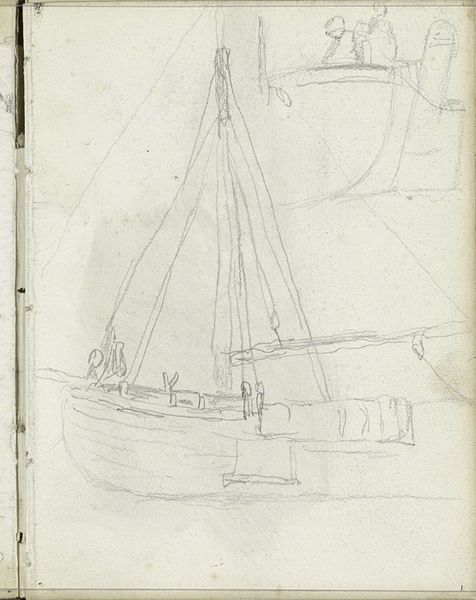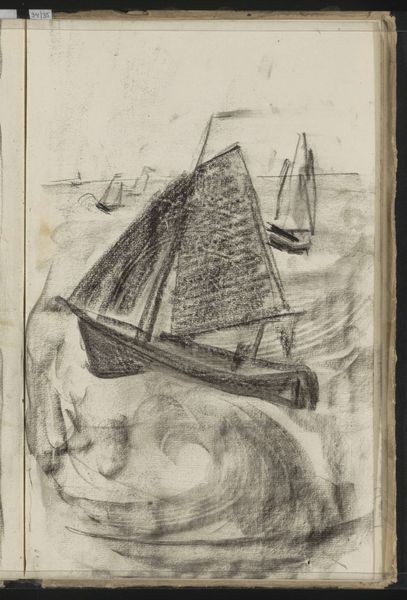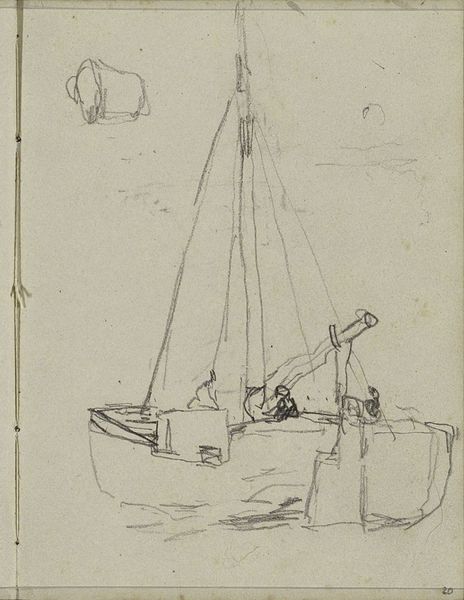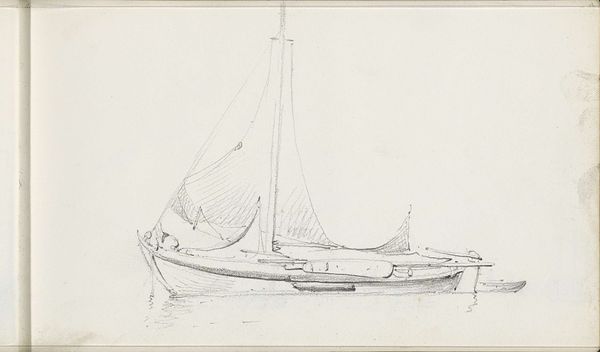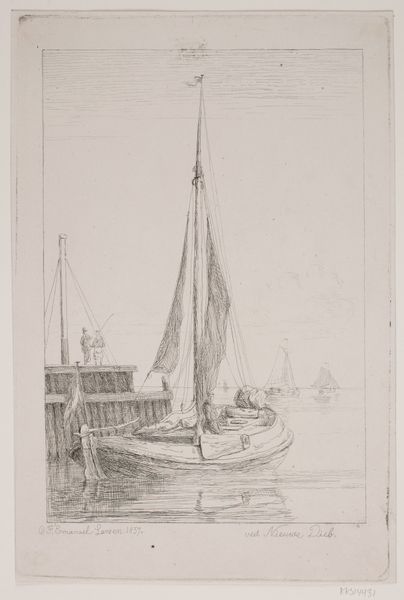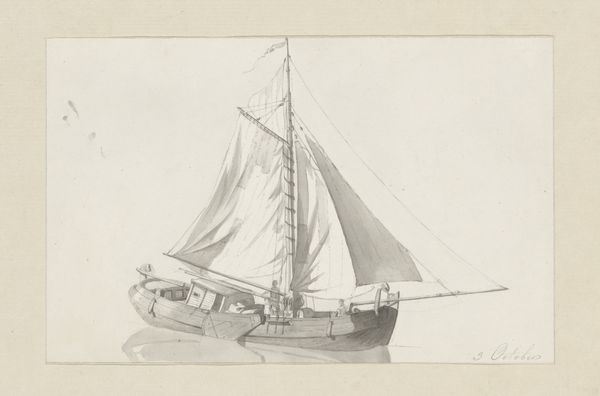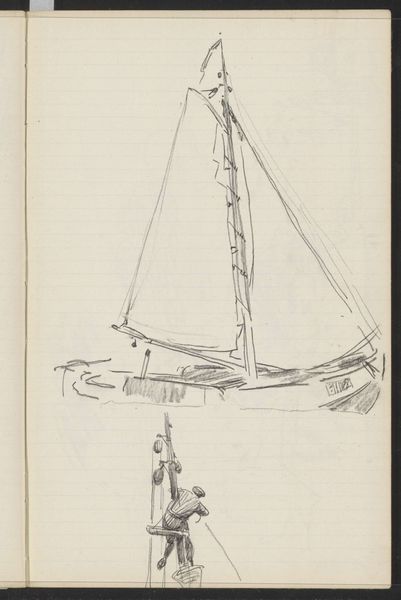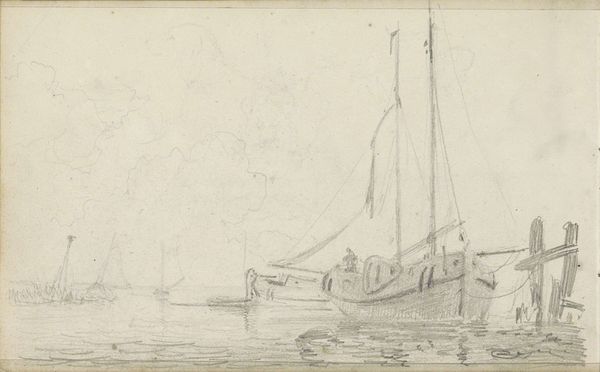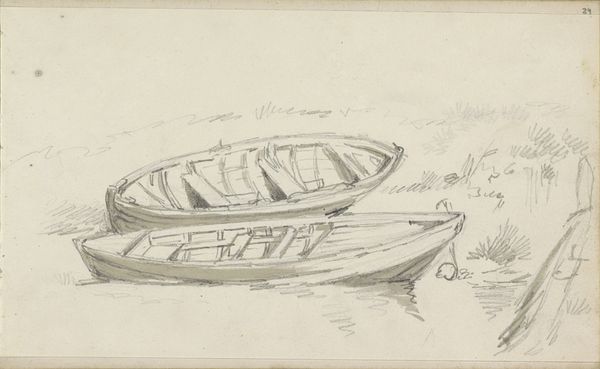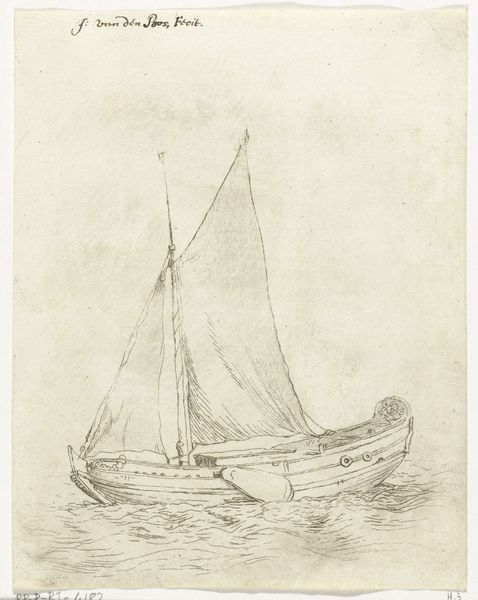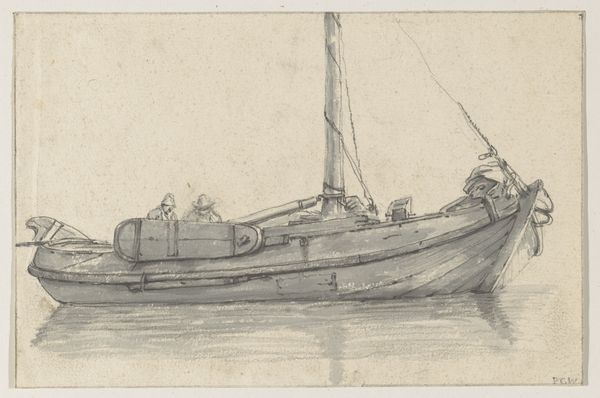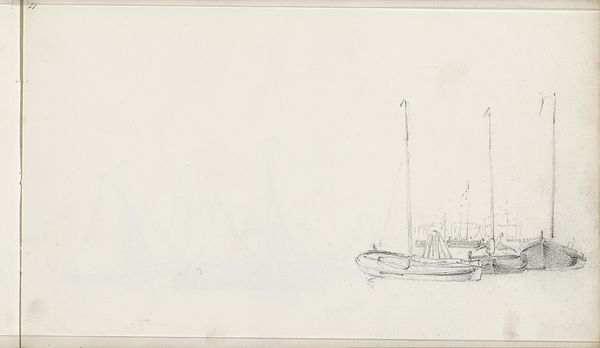
drawing, pencil
#
drawing
#
landscape
#
pencil
#
realism
Copyright: Rijks Museum: Open Domain
Editor: We're looking at "Vissers op een zeilschip op open water," a pencil drawing by Willem Bastiaan Tholen, made sometime between 1900 and 1931. It's currently at the Rijksmuseum. It's a simple sketch, but the detail on the water is captivating. What catches your eye most about this piece? Curator: What immediately strikes me is the quiet representation of labor. We see these figures, presumably working-class fishermen, rendered in a matter-of-fact style that avoids romanticization. Tholen invites us to consider their place within the broader socio-economic structure. Who had the privilege of leisure to paint the subject, versus those who needed to labor on open water? How does access, or lack of access, shape not only lived experience, but art production itself? Editor: That's a perspective I hadn't considered. I was focusing more on the technique. Curator: The apparent simplicity, achieved through what appears to be a quick sketch, should not distract us from its intentionality. What assumptions do we bring to images of working-class individuals at the turn of the century? What are the implications when an artist decides to depict labor? Editor: I suppose it invites us to question the roles within the art world itself and broader economic structures. Curator: Precisely. And by placing the labor within the landscape, it further prompts contemplation on how the human story intertwines with nature and the environment. Where is the intersection between labor, environment and power? Editor: It certainly makes me rethink what I initially saw as a simple drawing. Thank you! Curator: My pleasure! It is critical to remember art holds power; It both mirrors our world and offers the possibility of change.
Comments
No comments
Be the first to comment and join the conversation on the ultimate creative platform.
